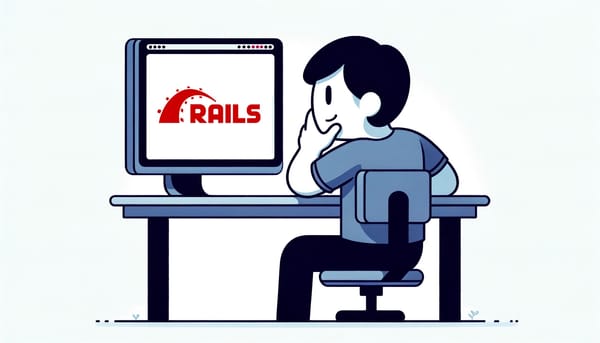Managing Up Examples: Tips for Software Engineers

1. Managing up is essentially building a positive relationship with your manager. It helps us succeed in the organization, allowing us to get closer to promotion and rewards.
2. Managing up helps us boost productivity. We avoid wasting time and effort in the wrong direction.
3. However, managing up is not about doing our manager's job or monitoring their performance.
Being a software engineer is busy. We solve technical problems, collaborate with the team, and work with the manager. Through all these, we try to get the best results for the organization. Yet, working with your manager could be a huge burden. They might not understand your work entirely, but they review your performance.
This is when "managing up" comes into play. Managing up is about working with your manager. It's about creating a positive relationship and better alignment with them. This post will discover the significance of transparent dialogue and your managers' expectations. We'll also share real-world managing up examples from software engineering teams. This provides actionable strategies for enhancing your career trajectory through effective 1-on-1 meetings.
So buckle up; it's time to take control of your professional growth by mastering managing up.
Understanding Managing Up

What Is Managing Up
Imagine you're a talented musician. Yet your music only gets the spotlight when the conductor recognizes its value. In the workplace, managing up is how you make sure your melody isn't lost in the background noise. Managing up is about communication and collaboration.
Why Managing Up
Everyone has only access to a certain amount of information. Your manager won't know everything that you're doing. Managing up from you provides better alignment between you and your manager. It provides transparency, goals, and progress. It's helpful for them to adjust team directions and conduct performance reviews. It's also helpful for you since you know that you are spending time and effort in the right direction.
Managing up is also necessary if you run into a new manager. They are still getting to know the team and yourself. You expect them to know your progress and track record. However, information could be lost in daily communications due to busy work schedules. For example, if members expect bigger challenges, they need to tell their manager. Without clear communication, the manager won't know this without great perception skills.
It's also for the members' long-term careers. Members can communicate with their manager to understand how to make progress, which makes both of your jobs easier.
The Myth of Managing Up
There is a common misunderstanding that managing up is doing your manager's job. This is a myth. Managing up is a collaboration, so it's more about alignment, reminder, and clarity. A well-executed managing up should involve no boundary-crossing.
For example, you find your manager incompetent in setting up the team's goals. The team is not clear about their short- and long-term goals.
An ideal solution is to describe this issue to the manager and ask for solutions. The manager might not be able to resolve it right away. However, bringing this to clarity gives the manager the opportunity to work on this issue. A reminder during regular check-ins might help push this process forward.
Doing the task directly for your manager might be an alternative, but it adds one big task to your plate. It's is not your job to create these goals unless you are ready to move to the management path. If the manager is not able to complete this task given reasonable time, talk to the skip manager would be a good idea.
The idea is that you want the best interests of your team, but not only the best interests of your manager. Managing up is to create a win-win situation for the entire team instead of only serving your manager.
Is Managing Up Bad?
Some argue that employees manage only when working with an incompetent manager. If the managers are doing their job well, no one needs to manage up. However, we all know that humans are imperfect, and so is our manager.
It's very common to start our job and find out that there are a dozen ways to improve the workplace and our manager. We work on a certain valuable task, but no one pays attention to it. It could happen even with the best managers and teams. That's why we need alignments. We don't want to give this responsibility entirely to the manager. Yes, it's their job to do it well, but we're there to support them. Since we are in the same team, it's either a win-win situation or we both fail.
Managing Up Examples in Real-World Engineering Teams

Both you and your manager need to move in sync to create success. That's managing up in action—knowing when to lead, when to follow, and how best to complement each other's moves.
Example 1: Proactively Pointing Out Issues
A developer noticed that project timelines were often unrealistic due to scope creep. They felt hesitant about speaking up. At one point, they finally took action and scheduled a meeting with their manager. Instead of pointing fingers, they presented the idea that scope creep led to delays. The team can resolve this issue through better communications and project management patterns.
For example, project managers should maintain a clear communication with the stakeholders. Scopes, once fixed, should not be change unless necessary. There should also be a mindset to put extra tasks in a later stage, instead of adding them to the current stage. These patterns help the team to reduce the possibility of scope creeps.
Choosing this strategy showed the developer's foresight. It also offered a constructive resolution to the team and avoided spotlighting issues.
Example 2: Clarity on Feedback Loops
An experienced software engineer struggled with receiving vague feedback from their manager. They decided that it was time for clear communication. During their 1-on-1 meetings, they started to ask very specific questions. For example, "What are things I did well on this project?" or "Can you give me an example of what I could have done differently?".
Adopting this approach transformed the conversations into concrete, actionable steps forward. Note that the manager might not be able to come up with a good answer right away. That's why the feedback was vague in the first place. However, the importance lies in bringing more clarity to this topic.
Example 3: Handling Disagreement in Technical Directions
A manager insisted on implementing a new software pattern. For example, improving the unit test coverage to 100%. A software engineer believed that it was not realistic to the team.
The software engineer decided to resolve this issue. They first tried to understand the manager's perspective and the reasons behind this decision. For example, asking how is that important and where this requirement comes from. They then outlined the potential challenges and risks associated with the new approach. For example, putting emphasis on the burden of maintaining a high level of test coverage. Also, an alternative is to ensure product quality by adding more types of testing, such as end-to-end testing, load testing, and security testing. Those tests provide better values than improving only one type of testing.
The software engineer focused on providing constructive solutions during communications. This approach demonstrated the proactiveness and dedication to the team's goals. It finally led the manager to a reconsideration of the initial decision.
Key Principles and Actions of Managing Up

Empathy: Walking In Their Shoes
To excel at managing up, one must master empathy. They understand things from management's view. It provides insights into what drives their decisions and concerns. By grasping this perspective, we can craft solutions that fulfill the team's interests (not just the manager's interests).
Taking Initiative
Harvard Business Review highlights the importance of taking initiatives. It is to anticipate needs and act proactively rather than waiting for instructions. It can set you apart as an invaluable asset within any organization. This doesn't mean stepping over boundaries, though. Discovering those moments adds extra worth, but not overstepping the boundaries.
Understanding the Team
Understanding what team needs bridges gaps between different levels within an organization. It is a conversation not only with your manager but also with those who understand your team. It might be the product manager or senior developers.
Understanding the team's context helps you better understand what the team needs next. Some example discussions include:
- Current team goals (short-term and long-term)
- Their expectations from you on certain tasks
- Things that they expect the team to do better
- Things that they expect the team to continue to do
Template for managing up through 1-on-1 meetings

Mastering the art of managing up can feel like trying to solve a Rubik's Cube in the dark. But it doesn't have to be that complex. A solid game plan for your 1-on-1 meetings with your manager can light the way.
From Day One: Clarify Expectations and Align Goals
Your initial one-on-one with the manager isn't only about warming up to each other. It's the pivotal moment where you set the groundwork. Digging deeper into this conversation early on helps avoid misunderstandings later. And it ensures that you are both pulling in the same direction.
Here is a list of items you should align with your manager from day one:
- From the manager:
- Manager's suggestion on excelling in your role.
- What does a good team player look like in the team?
- What does the career progression look like in the organization?
- Who are the authorities among the team members?
- How to make your manager's job easier as a software engineer?
- What should be included in the regular status updates?
- Manager's professional goals.
- Manager's management style (this can be vague, but ask for more concrete answers if possible).
- From yourself:
- What's the best frequency of updates?
- What's your preferred channel of communication, text messages or calls?
- How can the manager help you become more productive?
- How can the manager help to make your life easier?
- Your mid- or long-term career goals.
Regular Check-ins
Maintaining momentum requires frequent touchpoints beyond day one. Use subsequent 1-on-1s as opportunities to discuss progress toward agreed-upon goals.
Here is a list of items you should revisit with your manager often, ideally during every 1-on-1 session:
- Status update
- What's been going well
- What's been not going well (e.g., blockers, concerns, issues)
- Anything that the manager is not aware of
- Difficulties of the current tasks
- Anything you would like feedback on (e.g., tasks, decisions, progress)
- Confirming current performance vs expectations
- Anything you would like your manager to change (e.g., communication style or any part you would like to have more attention on)
Conclusion
Mastering managing up is a game-changer. It's about making your voice heard, understanding what your manager needs, and aligning those needs with your career goals. By understanding and adapting to your manager's communication style and work style, you are able to take initiative, address conflicts, and aligning your goals with managerial objectives. You then create a strong foundation for success.
So remember: Communicate clearly, understand deeply, and act wisely. Let these strategies be your compass as you navigate the path to professional growth through managing up.





